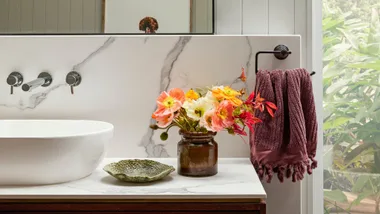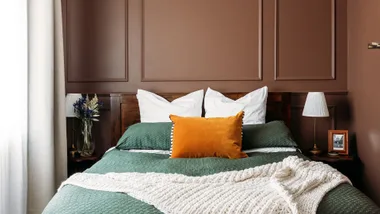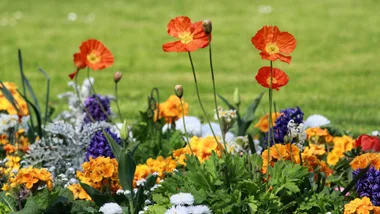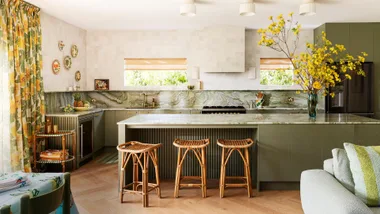The outdoor shower is increasingly becoming a regular feature in the backyard, here’s all you need to know

It’s a scorching hot summer day, and you’ve arrived home after a swim at the beach. You’re feeling refreshed and invigorated, but you’re also covered in sand and sea salt. Rinse off in the sunshine under an indulgent shower – not in your bathroom, but in your garden. By doing so, you and your family won’t be queuing up at the bathroom door or trekking sand through the house.
Not only are outdoor showers great for having next to your swimming pool, spa or at the bach, but they are also handy for cleaning pets or children after they’ve been playing in the mud, says Lauren Rogers, a spokesperson from Plumbline. “They can also be a key design feature for your outdoor area,” she says.
An outdoor bathroom isn’t merely a practical accessory, but brings an indulgent, soothing element too. “An outdoor shower is a great space for relaxation if you want time out for yourself for five minutes, or to connect with nature,” says Nathan Brown, operations manager at Hydra Plumbing Supplies. “You may also want a set-up that feels more like something you’d find at a spa or holiday destination.”

Fitting it out
When choosing your fittings, Nathan recommends using brass as it doesn’t rust. “Chrome provides a shiny look and is low maintenance as it doesn’t age, but it has to be of good quality,” he says. “Chrome plating can fail if it’s too thin.” Ensure your fittings are warranted to go outdoors, he says. Some fittings aren’t made to be used outdoors, which means the warranty doesn’t apply.
Marine-grade 316 stainless steel is designed for the outdoors, with Lauren saying it is the best material to look for when choosing tapware. “This is the same material used for railings on boats or beach-front fencing, so it will withstand the harshest environments containing chlorine and salt water,” she says. “Brass and copper can also be used; however, these metals will develop a patina or oxidisation.” This means they will change within different environments, depending on your area, usage and water properties.

Pipe dreams
Ideally, an outdoor shower should be accessible to existing plumbing, where you can tap into your home’s hot water supply for a seamless bathing experience, Lauren says. “Consult your plumber for advice on your specific house and garden set-up,” she says. “We recommend plumbing it to the mains pressure as the selection of outdoor-suitable products is larger with mains pressure.” You can also install a separate instant water heater to supply hot water to the outdoor shower, she says. You may want to consider having your plumbing pipes hidden into your house wall. “It hides the ugly parts of the plumbing,” he says, “unless they are designed to be exposed.”

Planning permission
If you want to use your shower for a quick rinse off, you probably won’t need planning permission. But if heavier usage is planned, you may need it. “Planning permission may be needed depending on the kind of installation and location involved too,” Lauren says. “Homeowners should check with their local council as each has different requirements. They could also check with their plumber or landscaper to see if consents are required in their area for the type of installation they want. Things like having cold water versus hot water may affect the type of consent needed.” Connecting to the wastewater system might also have to meet council regulations, she says.

Keep it private
You’re already out amongst nature, so why not take this as your inspiration and provide privacy with lush greenery? Hedging or planters surrounding your shower will work, and you could even tie in some hibiscus for a tropical feel. “Screening the area with plants is a great way to create privacy, as is an existing fence, a stylish timber/bamboo screen or the side of your house,” says Lauren. Take your cue based on what space you have, Nathan says. “Some people build a wooden enclosure around their shower, with a dividing wall to hang towels on,” he says. “If yours is beside your pool, you may need less privacy because you’ll be wearing your togs while using it.”

Drainage
If your shower is likely to be used frequently, connect it to the house wastewater system to avoid your garden becoming too damp or unstable.

Pick the spot
Choose a location that works best for your lifestyle, whether it is next to the pool, spa or by the gate for easy access after the beach, Lauren says. You can even add finishing touches by getting creative with pebble pathways or tiles, just ensure it ties in with your house and garden as a whole.
Words by: Catherine Steel. Photography by: Are Media Syndication










